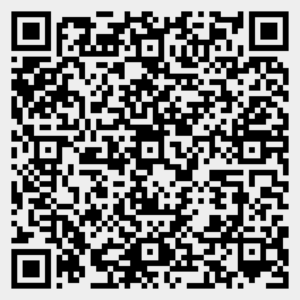D-4.1 Drainage System Testing Code Requirements
The regulations set out in the National Plumbing Code (NPC) are intended to ensure the quality and functionality of plumbing installations, protect the health of the occupants and the general public, and protect the building structure from damage caused by improper piping installation. As a result of this intent, drainage and venting pipes are required by code to be pressure-tested after the installation of each phase of the project.
The term “authority having jurisdiction,” commonly referred to as AHJ, covers a variety of regulating organizations. In the plumbing trade, the most common application is referencing the building official responsible for plumbing code and regulation enforcement.
For the building official, the limits may be the building and plumbing codes adopted by the jurisdiction. Quite often, local AHJ may require a DWV installation to meet bylaws or regulations that address local conditions before they will give approval. Some examples of local regulations could include using piping materials suitable for local soil conditions or burying piping at a certain depth to prevent freezing.
National Plumbing Code Testing Requirements
The NPC has certain requirements for testing DWV systems to ensure uniformity throughout its jurisdiction. Once the piping rough-in has been completed (ground work or above grade), the piping is required to be under a test while being inspected to confirm that there are no leaks as well as to confirm conformance with all other code requirements. The installer is required to notify the plumbing inspector or the administrative authority having jurisdiction over plumbing work before the test is applied.
Concealed work should remain uncovered until the required tests have been done and the work has been inspected. When testing, the system should be properly restrained at all bends, changes of direction, and the end of runs to prevent system failure due to applied test pressures. Follow proper safety procedures and use protective equipment during all testing procedures. Installers should always consider local conditions, codes, manufacturer installation instructions, and architect/engineer instructions in any installation.
The following are required by the NPC.
Testing Drainage Systems
- Except in the case of an external leader, after a section of a drainage system or a venting system has been roughed in, and before any fixture is installed or piping is covered, a water or air pressure test or air pressure test shall be conducted.
- After every fixture is installed and before any part of the drainage system or venting system is placed in operation, a final test shall be carried out when requested.
- Where a prefabricated system is assembled off the building site in such a manner that it cannot be inspected and tested on site, off-site inspections and tests shall be conducted.
- Where a prefabricated system is installed as part of a drainage or venting system, all other plumbing work shall be tested and inspected and a final test shall be carried out on the complete system when requested.
- When requested, a ball test shall be made to any pipe in a drainage system.
- Every pipe in a drainage system, except an external leader or fixture outlet pipe, shall be capable of withstanding without leakage a water pressure test, air pressure test, and final test.
- Every pipe in a drainage system shall be capable of meeting a ball test.
Testing Venting Systems
Every venting system shall be capable of withstanding without leakage a water pressure test, air pressure test, and final test.
DWV Tests Types
Testing of pipes in a DWV system is usually done after the rough-in phase by sealing off all trap arms and the building drain using plugs or inflatable balls. Four main tests may be performed on a DWV system:
- Water pressure tests
- Air pressure tests
- Final tests
- Ball tests
Water Pressure Tests
A water pressure test consists of applying a water column of at least 3 m (10 ft) to all joints. In making a water pressure test, every opening except the highest shall be tightly closed with a testing plug or screw cap, and the system or section shall be kept filled with water for at least 15 minutes.
Air Pressure Tests
Air pressure tests shall be conducted in accordance with the manufacturer’s instructions for each piping material. Air shall be forced into the system until a pressure of 35 kPa (5 psig) is created, and this pressure shall be maintained for at least 15 minutes without a drop in pressure.
Final Tests
Where a final test is requested and made, every trap shall be filled with water, and the bottom of the system being tested shall terminate at a building trap, test plug, or cap. Smoke from smoke-generating machines shall be forced into the system, and when the smoke appears from all roof terminals, they shall be closed. A pressure equivalent to a 25 mm (1 in.) water column shall be maintained for 15 minutes without the addition of more smoke.
The smoke may be omitted, provided that the roof terminals are closed and the system is subjected to an air pressure equivalent to a 25 mm water column maintained for 15 minutes without the addition of more air.
Ball Tests
Where a ball test is conducted, a hard ball dense enough not to float shall be rolled through the pipe. The diameter of the ball shall be not less than 50 mm (2 in.) where the size of the pipe is 75 mm (3 in.) or more or 25 mm where the size of the pipe is less than 75 mm.
 Self-Test D-4.1: Drainage System Testing Code Requirements
Self-Test D-4.1: Drainage System Testing Code Requirements
Complete Self-Test D-4.1 and check your answers.
If you are using a printed copy, please find Self-Test D-4.1 and Answer Key at the end of this section. If you prefer, you can scan the QR code with your digital device to go directly to the interactive Self-Test.

References
Skilled Trades BC. (2021). Book 2: Install fixtures and appliances, install sanitary and storm drainage systems. Plumber apprenticeship program level 2 book 2 (Harmonized). Crown Publications: King’s Printer for British Columbia.
Trades Training BC. (2021). D-4: Test sanitary and storm drainage systems. In: Plumber Apprenticeship Program: Level 2. Industry Training Authority, BC.
A model plumbing code developed by the National Research Council of Canada, updated every five years. (Section D-1.1)
The governmental body responsible for enforcing any part of the NPC. (Section D-1.2; Section D-2.4)
A plumbing system or part of a system that is built somewhere else (not at the building site) and then brought in and put into place. (Section D-4.1)
A test that checks for leaks by filling pipes with water and keeping them pressurized for a set amount of time. (Section D-4.1)
A test that checks for leaks by filling pipes with pressurized air and observing if the pressure drops. (Section D-4.1)
A test performed after fixtures are installed to make sure the whole plumbing system is working properly and has no leaks. (Section D-4.1)
A test that checks for proper slope and obstructions in pipes by rolling a dense ball through the system. (Section D-4.1)

